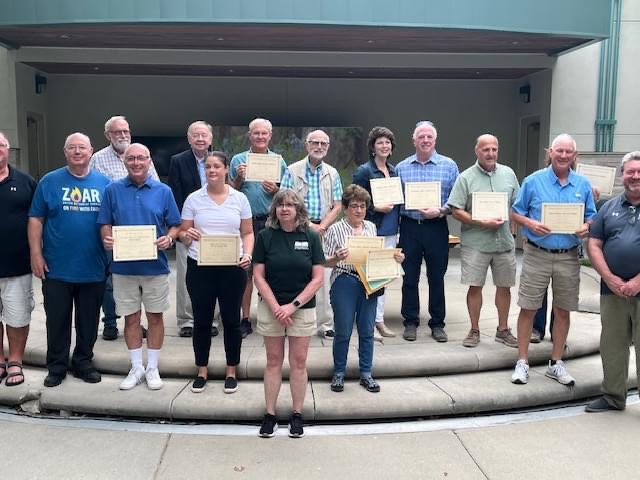
– Photo courtesy of DPS
The South Delphi Historic District has officially been added to the National Register of Historic Places by the Indiana Department of Natural Resources to commemorate the historical significance of the area in Delphi.
The South Delphi Historic District, which is “roughly bounded by the north boundary of Riley Park on the north, Prince William Road on the northeast, the alley south of Summit Street on the southeast and Wabash Street and the west boundary of Riley Park on the south and southwest,” was officially added to the register last week as members of the Indiana Department of Natural Resources presented awards at the Indiana State Fair to commemorate the designation.
According to the application for addition to the register, the number of resources within the property saw 71 contributing buildings, one contributing site, six contributing structures and one contributing object for a total of 79 contributing resources. It also saw eight noncontributing buildings and one noncontributing structure for a total of nine noncontributing resources.
Architectural classifications that led toward the designation included, Mid-19th Century Greek Revival, Late Victorian Gothic, Italianate and Queen Anne, Late 19th and 20th Century Colonial Revival, Late 19th and Early 20th Century Bungalow and Craftsman Movements and Ranch.
In the initial application for the register, a narrative description and summary was provided to influence the Indiana Department of Natural Resources to consider the inclusion of the district.
The South Delphi Historic District is composed of about 10 blocks of the original plat of South Delphi, which has been nicknamed over the years as “the Hill” and its residents referred to themselves as the “Cliff Dwellers” or “Hillers” by the 1920s.
The plat was created in 1864, though a handful of homes predated the plat. The blocks filled in quickly with both vernacular residences and excellent examples of Gothic, Italianate, and Queen Anne architecture.
A building boom at the end of the 1930s into the 1950s rounded out the district’s architecture with modest examples of traditional revival styles and Ranch homes.
The plat was incorporated into Delphi proper in 1903, though the neighborhood retained its own identity with its own school and handful of businesses into the 1960s.
Road infrastructure, particularly the North Street Viaduct, and the development of adjacent Riley Park are also important features of South Delphi.
As of the award ceremony, the South Delphi Historic District has been added to the National Register of Historic Places. The Delphi Preservation Society released a statement of gratitude for the dedication of Anita Werling, Bonnie Maxwell and Kurt Gardner for their help and expertise that led to the designation.
